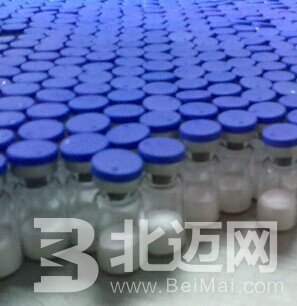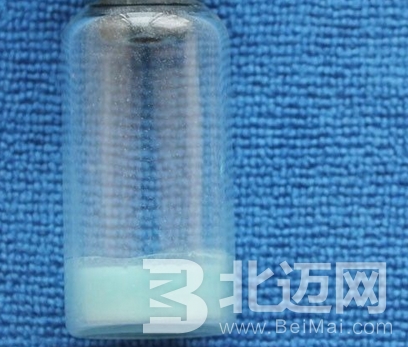The protective agent is a component which, in addition to the excipient, protects the pharmacological effect of the active ingredient of the drug during the freeze-drying process and the storage phase after lyophilization. Commonly used protective agents are sugars, albumin, polyethylene glycol and the like. Freeze-dried protective agent Protectant (additive) for freeze-dried biological products In addition to a small amount of raw materials containing a lot of dry matter such as human plasma can be directly lyophilized, most biological products need to add a certain substance when lyophilized, and can be lyophilized after being made into a mixed solution. This substance acts as a support after drying and as a protective agent during lyophilization. Sometimes referred to as fillers, excipients, buffers, and the like. 1) The main function of the protective agent (1) Cells of some living substances will die due to physical and chemical reasons such as cell membrane rupture, cell dehydration, and cytoplasmic condensation during freezing, sublimation or storage. These damages can be reduced by adding some antifreeze before lyophilization. (2) When the concentration of the solution is too low (<4%) in the case of lyophilization of the trace active substance, the dried substance will be scattered with the water vapor when it is sublimated, and will become a fluffy loose structure after drying, at the end of lyophilization. After that, the material of this structure will dissipate. Therefore, some filler is added to the solution before lyophilization to form a briquette structure. (3) Adding a gelatinous substance to the solution to be lyophilized can prevent precipitation of the solute before freezing and damage after lyophilization. (4) Adding certain substances can make the product easy to freeze or increase the rehydration effect of the dried product. 2) Requirements for protective agents (1) It does not contain any toxic or allergens and is harmless to the human body. (2) In the process of lyophilization, the survival rate of live bacteria vaccine can reach more than 50%, and the titer of live vaccine is generally less than 0.5. (3) It has a protective effect on the product during lyophilization and storage, but does not chemically react with the medicinal ingredients, and does not impair the activity of the living substance. (4) No blistering when lyophilized, and good water repellency after drying. (5) The disintegration temperature of the protective agent should be as high as possible. (6) Does not affect the detection of the product. 3) Types of protective agents (1) Low molecular weight substances such as sucrose, lactose and sodium glutamate. (2) Colloidal substances: such as Gelatin , natural glucan, dextrose, dextrin, agar and sodium alginate. (3) Antioxidant substances: such as sodium ascorbate, thiourea, potassium iodide and sodium molybdate. 4) The role of protective agent (1) Filler: used to prevent medicinal substances from scattering together with water vapor when evacuated, such as mannitol, inositol, dextran, lactose, glycine, PVP (polyvinylpyrrolidone), and colloidal substances. (2) Antifreeze: such as glycerin, dimethyl sulfoxide, PVP, sucrose, peptide, acetamide, etc. (3) Antioxidants: such as propyl citrate, vitamin E, vitamin C, amino acids, lecithin, protein hydrolysate, sodium thiosulfate, erythorbic acid, sodium ascorbate, and the like. (4) Improving the disintegration temperature: such as dextran, PVP, sucrose, and a mixture of glycitol proteins. (5) pH adjuster: used to adjust the pH to the most stable area. Such as citric acid, Phosphoric Acid, tartaric acid, amino acids, sorbitol, ethylenediaminetetraacetic acid (EDTA) and the like. (6) Buffering agents: such as skim milk, potassium chloride, and the like. (7) Elimination of Maillard reaction: such as sodium glutamate. Butyl Acrylate
Butyl Acrylate is an organic compound with the formula C4H9O2CCH=CH2. A colorless liquid, Butyl Acrylate Monomer is the butyl ester of acrylic acid. N Butyl Acrylate is used commercially on a large scale as a precursor to polybutylacrylate, which is used in paints, Solvent Raw Material sealants, coatings, adhesives, fuel, textiles, plastics, and caulk.
Butyl Acrylate Price can be produced by the acid-catalyzed esterification acrylic acid with butanol. Since it polymerizes easily, commercial preparations may contain a polymerization inhibitor such as Ethylene-Vinyl Acetate hydroquinone, Boric Acid Flakes phenothiazine, or hydroquinone ethyl ether.
Butyl Acrylate Cas 141-32-2 is of low acute toxicity with an LD50 (rat) of 3730 mg/kg.
In rodent models, N-butyl Acrylate is metabolized by carboxylesterase or reactions with glutathione; this detoxification produces acrylic acid, butanol, and mercapturic acid waste, which is excreted.
N-butyl acrylate (BA) is the largest-volume acrylate ester used in the production of all-acrylic, vinyl acrylic and styrene acrylic copolymers. BA offers price-value and accounts for about 60 percent of the global acrylic ester monomer demand, with a consumption volume of over 2,000 kilo tons.
Butyl Acrylate Monomer,Butyl Acrylate Price,Butyl Acrylate Cas 141-32-2,N-butyl Acrylate,N Butyl Acrylate HENAN LIHAO CHEM PLANT LIMITED , https://www.lihaochemicals.com


It is not difficult to see that freeze-drying technology is a high-tech, and reasonable use is a good thing. We must first ensure that the freeze-dried raw materials are suitable for lyophilization, and secondly, all kinds of human intervention during the freeze-drying process are scientific and hygienic. This way we can guarantee that the freeze-dried finished product is safe and effective. If you can't do this, hanging the freeze-dried signboard is just to create a market gimmick, and it is extremely irresponsible to consumers.